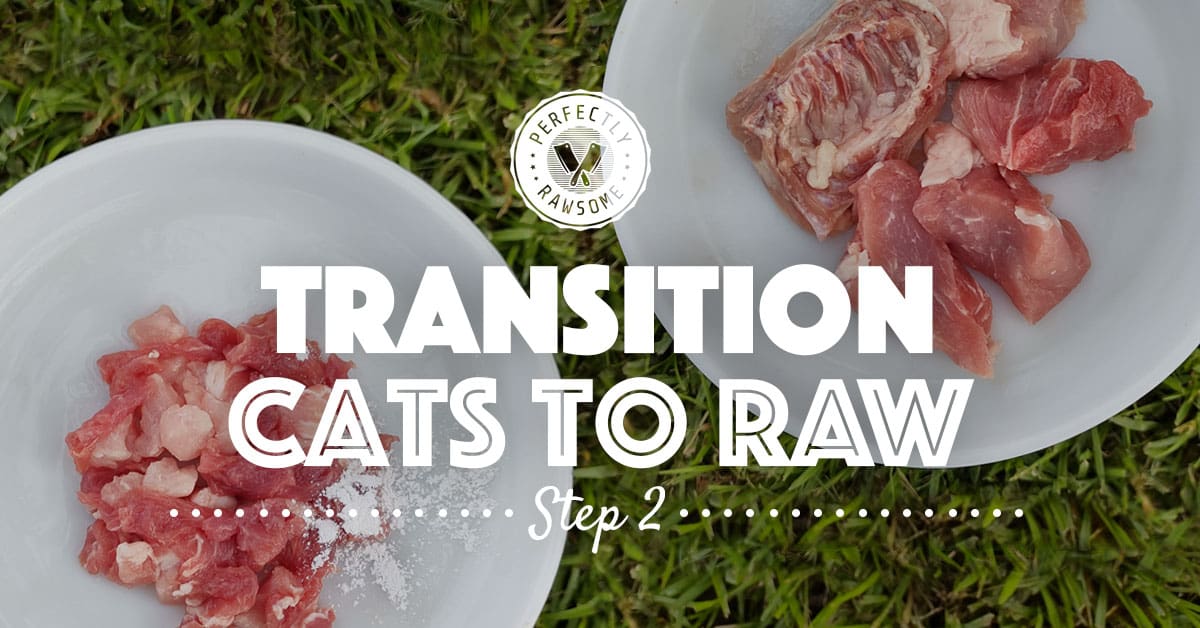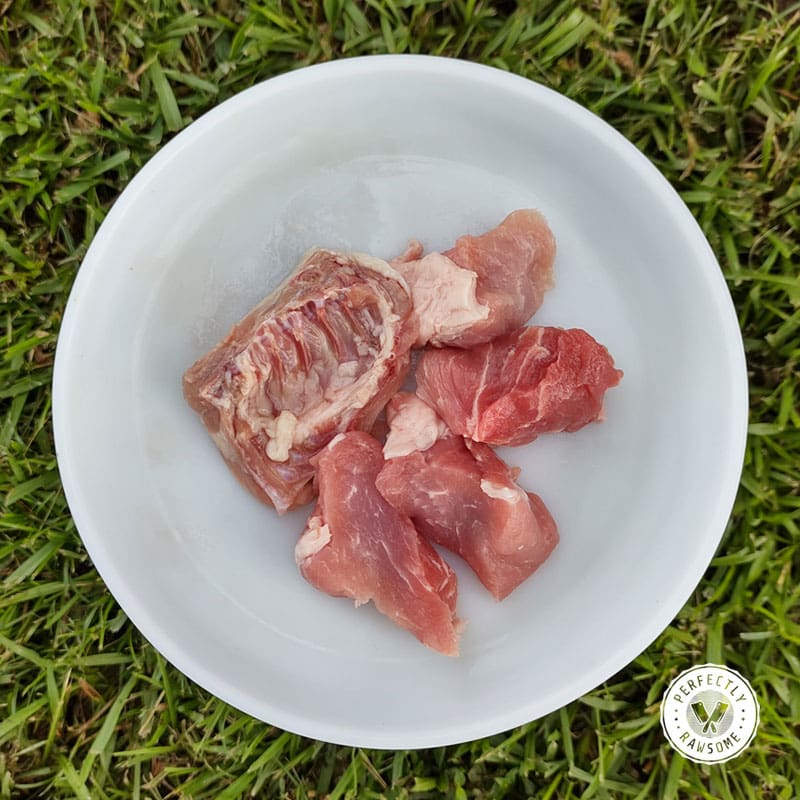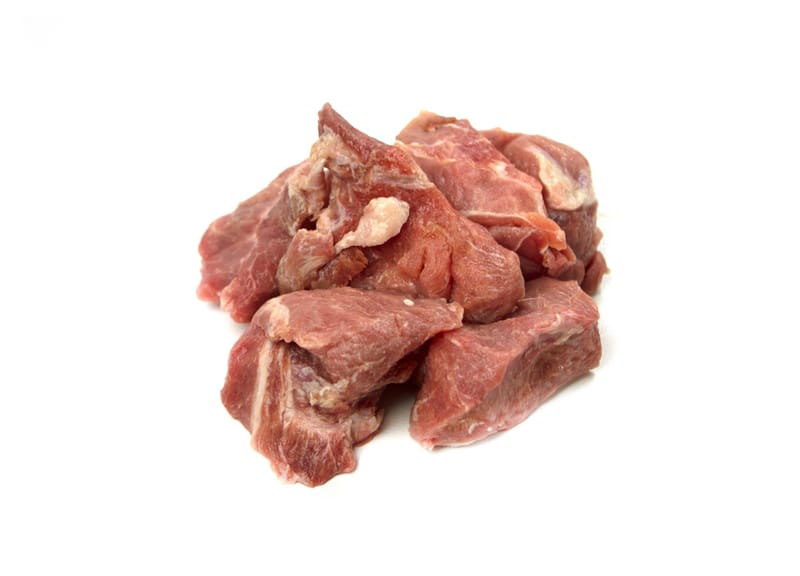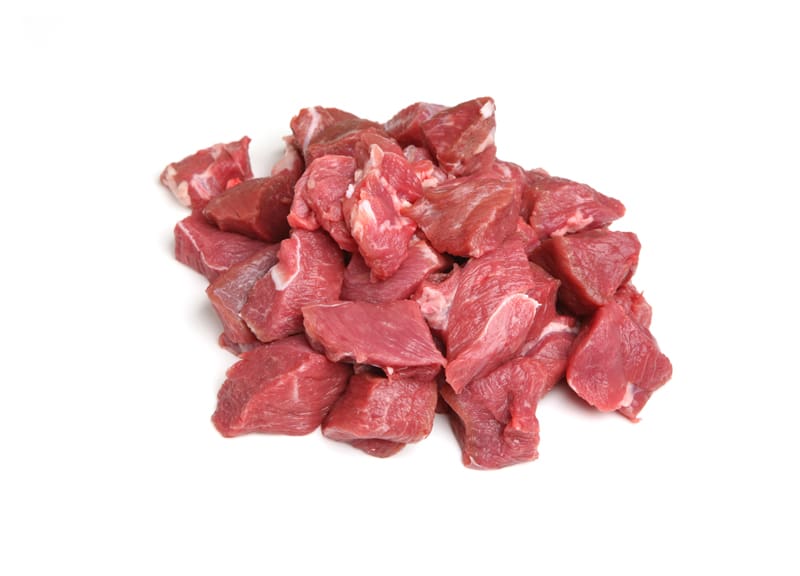Each step of the raw feeding transition will slowly progress a cat to a raw diet. The second step introduces new ingredients to progress towards balanced meals.
Simple meals using white meat are encouraged in step one. The second step of the raw transition introduces red muscle meat to meals to achieve more variety.
Introduce Red Meat
Add a red muscle meat protein to meals.
Raw Meaty Bones Remain Consistent
Continue feeding raw meaty bones from lean, white proteins.
Nutritional Yeast Remains Consistent
Continue feeding nutritional yeast throughout the transition.
Avoid rushing the transition process. It is normal to get excited and want to push forward. However, it is best to allow the cat to set the pace of the raw transition. Some cats take effortlessly to raw while others need more time.

Introduce Red Muscle Meat
The second step of the raw feeding transition does not match PMR model ratios because organs are not fed at this time. The ratios for step two are the same as step one, but the muscle meat portion includes red meat.
The ratios are starting guidelines, not rules, and should be modified for each cat’s individual needs. Some cats require more bone to maintain firm and consistent stool in comparison to others.

Meal Example 1
Pork Muscle Meat
Chicken Ribs

Meal Example 2
Diced Pork Muscle Meat
Calcium Supplement
Red Muscle Meat Options
In step two the raw meaty bones and nutritional yeast should remain the same as the ingredients fed in step one. The goal of step two is to increase the nutritional content of the meals by introducing red meat. Red muscle meat is higher in water-soluble vitamins and minerals in comparison to lean white meat. This makes red meat an ideal protein choice for raw diets.
Additionally, red muscle meat can help increase dietary fat within the diet when cuts with additional fat are chosen. Fat is an essential nutrient for cats for energy metabolism and the transport of nutrients throughout the body.

Boneless Pork Muscle Meat
Pork is the ideal red meat to introduce in step two of the transition process. Pork is higher in amino acids, water-soluble vitamins, and fats in comparison to white meat.
Different cuts of pork will yield different fat levels. On average, pork shoulder is higher in fat in comparison to pork loin. When the fat layer is trimmed off, pork loin is typically very lean.

Boneless Beef Muscle Meat
Beef is an alternative option to pork in step two of the transition process. Like pork, raw beef muscle meat is higher in many nutrients in comparison to white meat.
Different cuts of beef will yield different fat levels. On average, beef shoulder is higher in fat in comparison to beef loin or stew meat.
Intolerances & Allergies
Some cats cannot consume pork or beef due to an allergy or intolerance and these items should be avoided. In these instances lamb, goat, or wild game muscle meat are alternative red meat proteins.
Calculate Ingredient Amounts
It is recommended to slowly introduce red meat in step two of the transition process. A slow introduction is a proactive measure to prevent gastrointestinal (GI) upset. Start with adding red meat as 25% of the muscle meat portion, slowly increasing to 50%. Be sure to reduce boneless white meat accordingly.
Step two is not intended or recommended to feed long-term.
The second step of the raw feeding transition is not nutritionally complete and should not be fed long-term. Proceed to step three once the cat has maintained firm and consistent stool for a minimum of three days.
CLOSING COMMENTS
Step two of the raw feeding transition is designed to introduce cats to red muscle meat. Transitioning a cat to raw is exciting, but it is best to allow the cat to set the pace. Once stools have maintained firm and consistent for three days, proceed onto step three of the transition.
Red Muscle Meat
Step two introduces red muscle meat to increase the nutritional value of the raw diet. Start with adding 25% red meat to the muscle meat portion and increase to 50% when stools are firm and consistent.
Raw Meaty Bones & Nutritional Yeast
Continue feeding the same raw meaty bones and nutritional yeast from step one. Ingredient variety will come later once the cat is fully transitioned to a raw diet.
